Smoking ribs to perfection requires precise steps and techniques. Follow this step-by-step guide to achieve tender, smoky ribs every time: 1. Prepare ribs by removing the membrane and applying a dry rub. 2. Set smoker to 225-250°F. 3. Add wood chips for flavor. 4. Smoke for 3-5 hours, wrapping at the stall phase. 5. Rest for 10-15 minutes. 6. Apply sauce in the last 15-30 minutes. 7. Enjoy!
| Type | Tenderness | Flavor Intensity | Cooking Time | Best For |
|---|---|---|---|---|
| Baby Back Ribs | Very Tender | Mild | 3–5 hours | Beginners, lighter palates |
| St. Louis Cut Ribs | Tender with chew | Rich, meaty | 4–6 hours | Experienced smokers, bold flavors |
Both cuts are delicious but cater to different preferences. Baby backs come from the top of the rib cage and are leaner, while St. Louis ribs are trimmed spareribs—meatier and more flavorful, with a bit more fat to render during smoking.
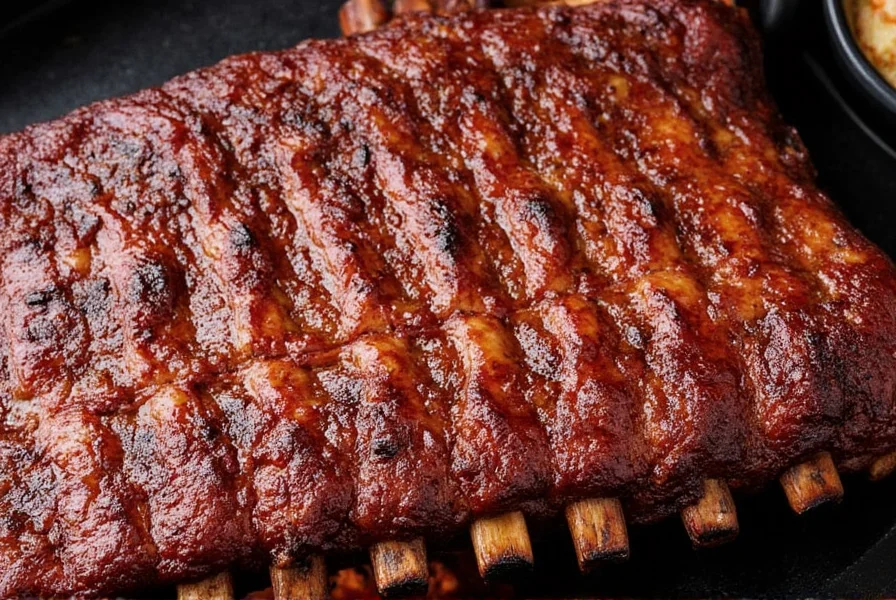
| Characteristic | Dry Rub | Wet Rub |
|---|---|---|
| Base | Salt, sugar, spices | Dry rub + oil, mustard, or vinegar |
| Texture | Crunchy bark | Moist surface, easier adhesion |
| Purpose | Build crust and depth | Enhance spice absorption |
A dry rub typically creates a beautiful bark—a caramelized crust that many pitmasters love. A wet rub adheres better and helps spices sink deeper into the meat. Try both to see which style suits your palate!
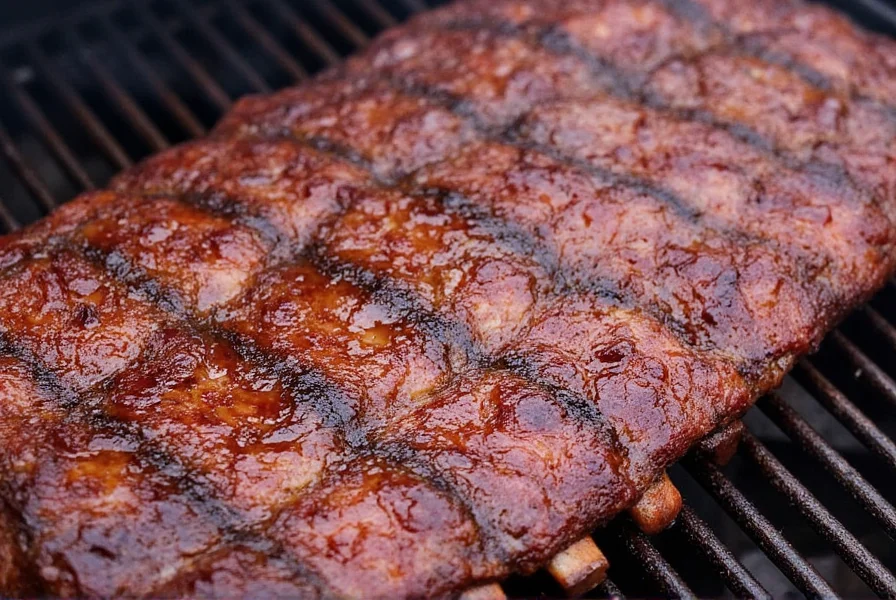
| Wood Type | Flavor Profile | Best Paired With |
|---|---|---|
| Hickory | Strong, bacon-like | St. Louis ribs, dark sauces |
| Applewood | Sweet, fruity | Baby backs, light glazes |
| Mesquite | Intense, earthy | Lamb ribs, Southwestern rubs |
| Cherrywood | Fruity, mild smoke | Fruit-based sauces, poultry |
Tip: Don't go overboard. Too much smoke can ruin your ribs. Use a mix of one strong wood (like hickory) and one mild fruitwood (like apple) for balanced flavor.
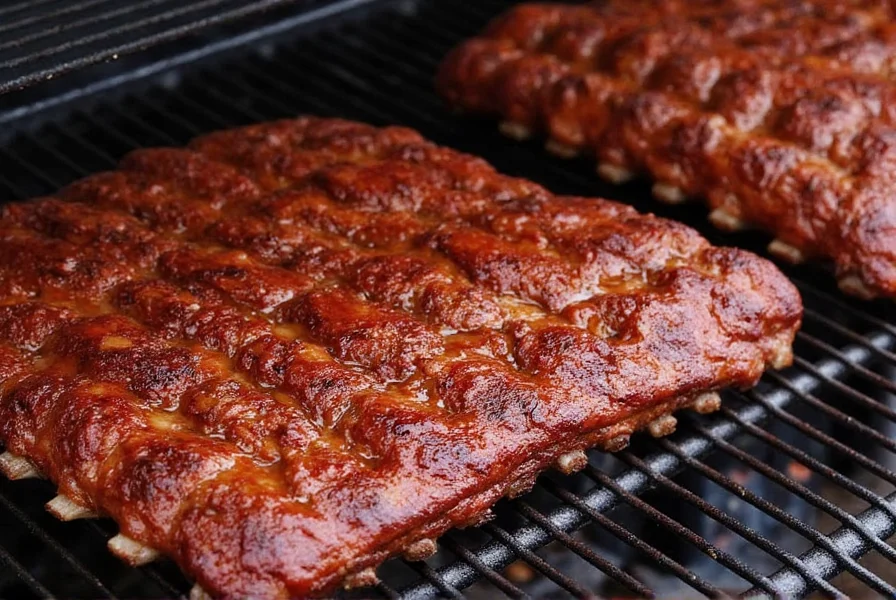
| Temp Range | Effect on Meat | Recommended Duration |
|---|---|---|
| 225°F | Perfect for slow breakdown | 4–6 hours |
| 250°F | Fast enough without drying out | 3–5 hours |
| 300°F+ | Too hot – risk of toughness | Not recommended |
Use a digital thermometer to monitor your smoker and consider a water pan to maintain humidity and prevent drying out.
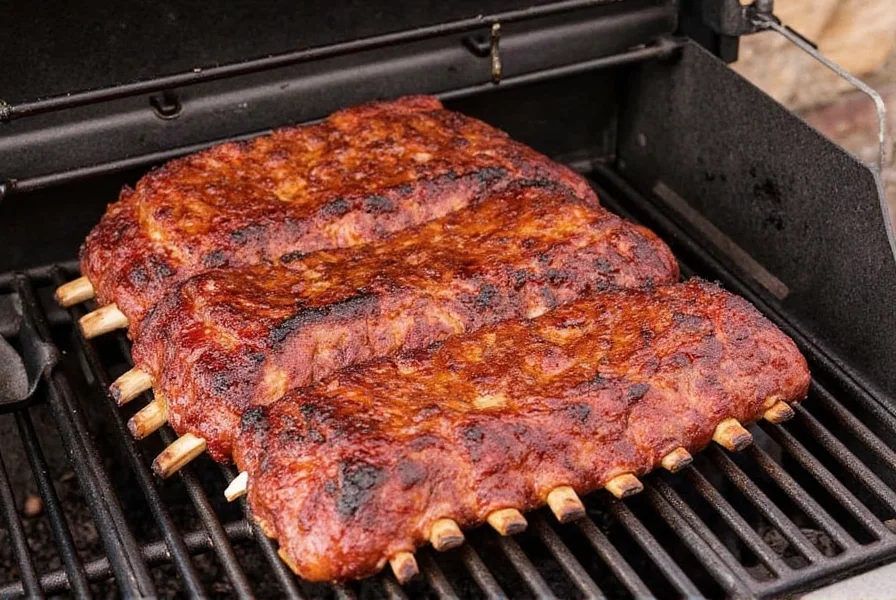
| Method | Pros | Cons |
|---|---|---|
| Aluminum Foil | Speeds up cooking, retains moisture | Can soften bark too much |
| Butcher Paper | Retains moisture while allowing breathability | Slightly slower than foil |
Wrap ribs after 3–4 hours of smoking, once they hit around 150–160°F internal temp. Wrap tightly but leave room for airflow if using butcher paper.
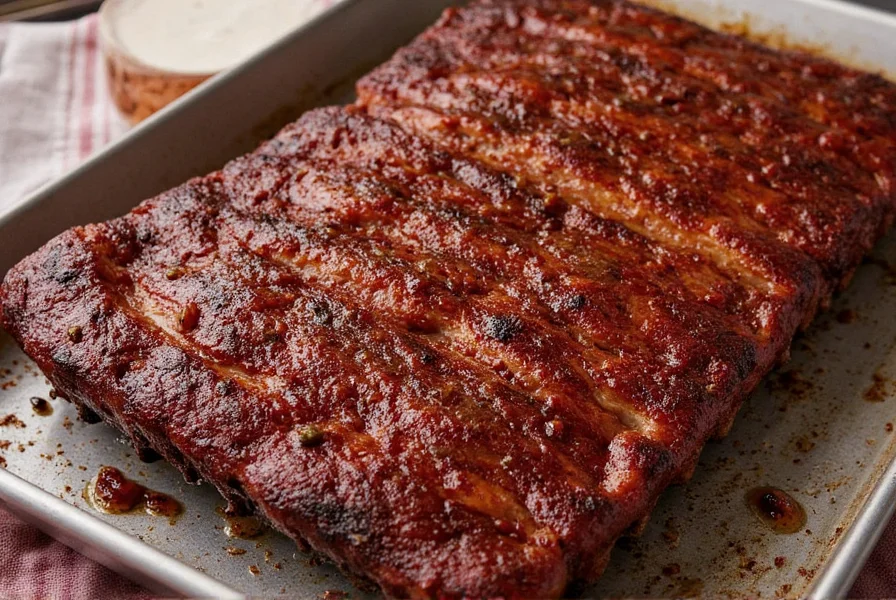
Once those ribs come off the smoker, resist the urge to cut in immediately! Letting them rest for 10–15 minutes allows juices to redistribute, ensuring every bite stays juicy and rich.
You can wrap them in foil and place them in a cooler to keep warm. This also gives the flavors time to settle and deepen before serving.
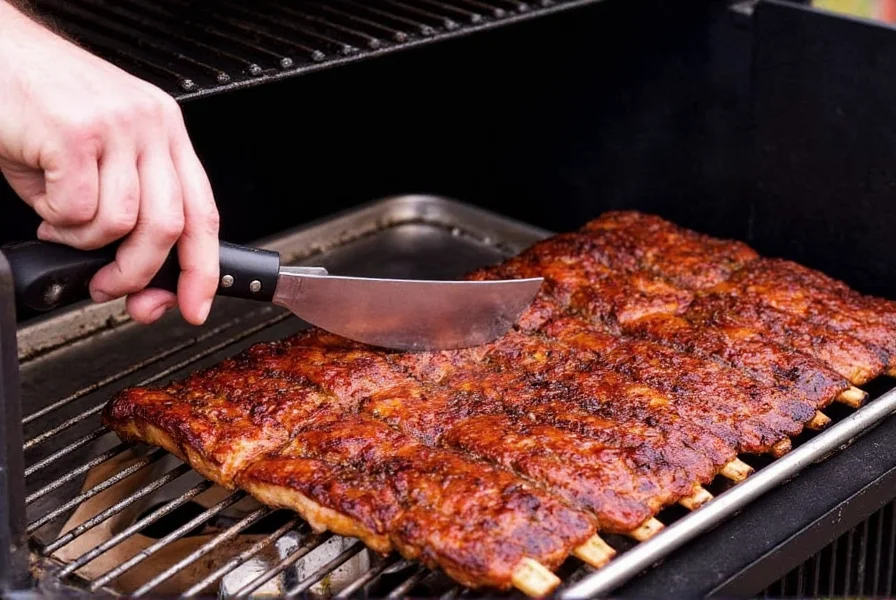
| Type | Characteristics | Best Applied When |
|---|---|---|
| Kansas City Style | Tomato-based, sweet & tangy | Last 30 minutes |
| Carolina Vinegar | Vinegar-forward, spicy | After resting |
| Texas Mop | Thin, buttery, peppery | During cooking |
Want to impress guests? Make your own custom sauce blend using ingredients like molasses, cider vinegar, Worcestershire, and smoked paprika.
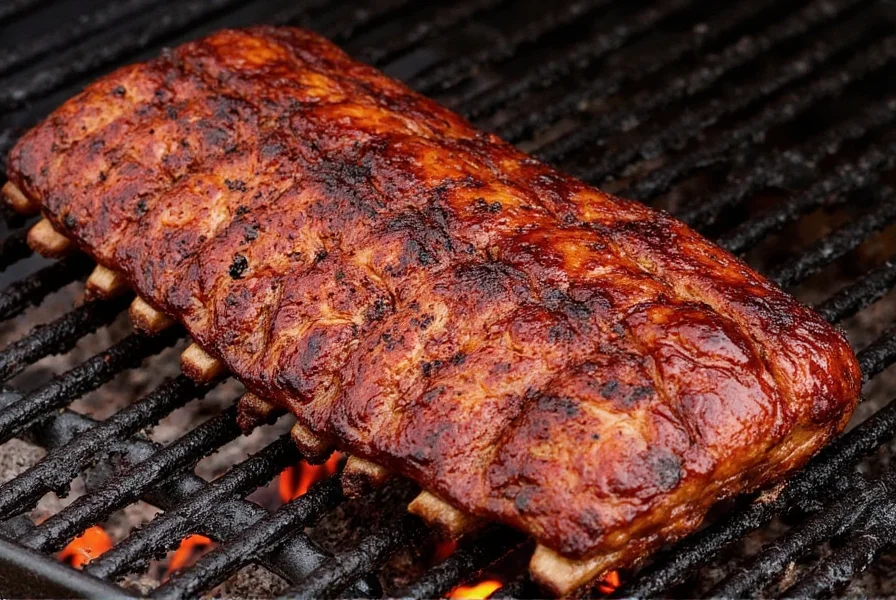
Frequently Asked Questions About Smoking Ribs
How long does it take to smoke ribs?
Smoking ribs typically takes 3-6 hours depending on the cut and temperature. Baby back ribs usually take 3-5 hours at 225-250°F, while St. Louis cut ribs take 4-6 hours. The exact time depends on your smoker's consistency and the specific rack of ribs.
What's the best wood for smoking ribs?
Hickory provides a strong, bacon-like flavor that works well with St. Louis ribs, while applewood offers a sweeter, fruitier smoke that complements baby backs. Many pitmasters recommend using a combination of one strong wood (like hickory) and one mild fruitwood (like apple) for balanced flavor.
Should I wrap my ribs when smoking?
Yes, wrapping ribs (often called the "Texas crutch") during the stall phase (when internal temperature is around 150-160°F) helps push through the temperature plateau. You can use aluminum foil for faster cooking and more tender results, or butcher paper which retains moisture while allowing some breathability to preserve more bark texture.
What temperature should I smoke ribs at?
The ideal smoking temperature for ribs is between 225°F and 250°F. At 225°F, ribs will cook more slowly (4-6 hours), allowing for maximum flavor development. At 250°F, cooking time is slightly faster (3-5 hours) while still maintaining tenderness. Temperatures above 300°F risk drying out the meat.
Do I need to remove the membrane from ribs?
Yes, removing the silver skin (membrane) from the bone side of the ribs is recommended. This thin membrane can become tough and chewy during smoking and prevents seasonings from penetrating the meat. Use a butter knife to loosen a corner, then grab it with a paper towel and peel it off completely.
How do I know when ribs are done?
Ribs are done when they reach an internal temperature of 195-205°F. The bend test is another reliable method: pick up the rack with tongs from one end - it should bend easily and cracks may appear in the bark. The meat should pull back slightly from the bones, exposing about 1/4 to 1/2 inch of the bone.
Should I apply BBQ sauce before or after smoking?
Apply BBQ sauce during the last 15-30 minutes of cooking to prevent the sugar from burning. Some regional styles like Carolina vinegar sauce are applied after resting. Kansas City style (tomato-based) works best when applied in the last 30 minutes, while thin Texas mops can be applied throughout cooking.
What's the difference between baby back ribs and St. Louis cut?
Baby back ribs come from the top of the rib cage near the spine. They're leaner, more tender, and have a milder flavor, making them ideal for beginners. St. Louis cut ribs are trimmed spareribs - meatier, with more fat and a richer, bolder flavor that stands up well to strong smoke and rubs.
Essential Tools & Products for Perfect Smoke Ribs BBQ
Digital Thermometer
- Product: ThermoPro TP20 Wireless Meat Thermometer
- Features: Dual probes, app connectivity, auto-shutoff
- Advantages: Monitor temperatures remotely; ensures perfect doneness
- Use Case: Smoking, grilling, roasting
- Target Audience: Serious backyard chefs, pitmasters
- Suitable Occasions: Family gatherings, BBQ competitions
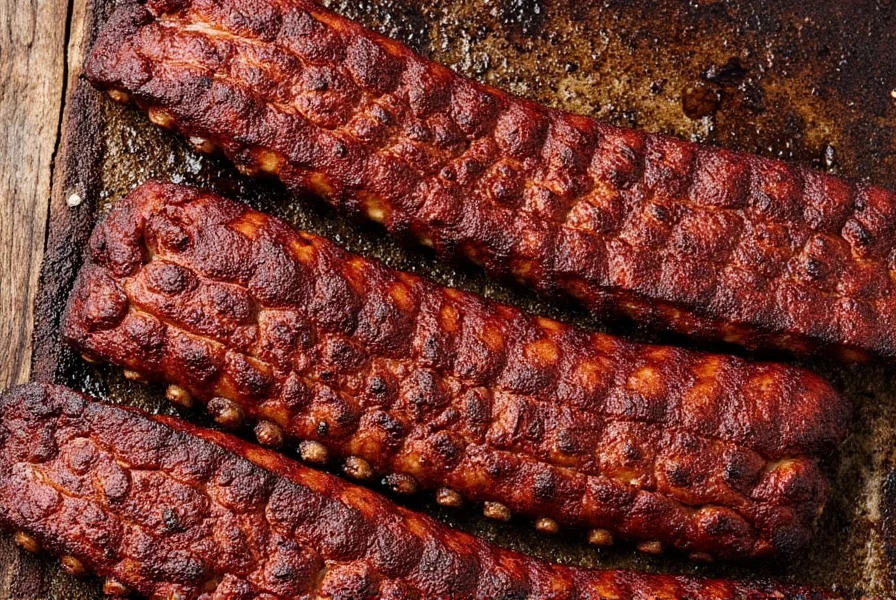
Offset Smoker
- Product: Weber Smokey Mountain Cooker
- Features: Water pan included, adjustable dampers, porcelain-coated steel
- Advantages: Maintains consistent temps, easy to use
- Use Case: Low-and-slow smoking
- Target Audience: Home smokers, BBQ enthusiasts
- Suitable Occasions: Weekend cookouts, holidays
Quality Wood Chips
- Product: Jack Daniels Hickory Wood Chunks
- Features: Pre-soaked, high-quality hardwood
- Advantages: Adds rich, aromatic smoke without bitterness
- Use Case: Enhancing smoke flavor
- Target Audience: Beginner to advanced smokers
- Suitable Occasions: All BBQ events
Rib Rack
- Product: Weber Rib Rack for Vertical Smokers
- Features: Holds multiple racks upright
- Advantages: Maximizes space, ensures even heat exposure
- Use Case: Smoking multiple racks at once
- Target Audience: Entertaining hosts, BBQ lovers
- Suitable Occasions: Parties, potlucks
High-Quality Rubs
- Product: Meat Church Holy Cow Rub
- Features: Balanced blend of salt, garlic, onion, brown sugar, paprika
- Advantages: Versatile, enhances natural meat flavor
- Use Case: Dry rub for ribs, brisket, pork
- Target Audience: Flavor-focused cooks
- Suitable Occasions: Everyday BBQ, special meals
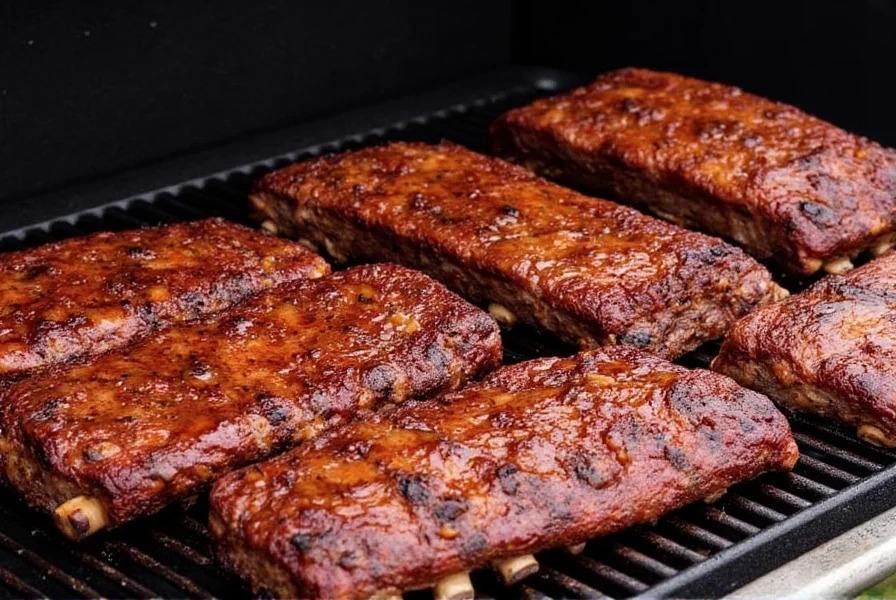
Mastering the smoke ribs BBQ process takes practice, patience, and a little bit of passion. From choosing the right cut to nailing the perfect bark and finding that dreamy balance of smoke and spice—you now have the tools and knowledge to impress your friends and family.
Remember, every great rib story starts with the basics. So fire up the smoker, grab your favorite rub, and get ready to turn your backyard into the ultimate BBQ haven. You've got this!
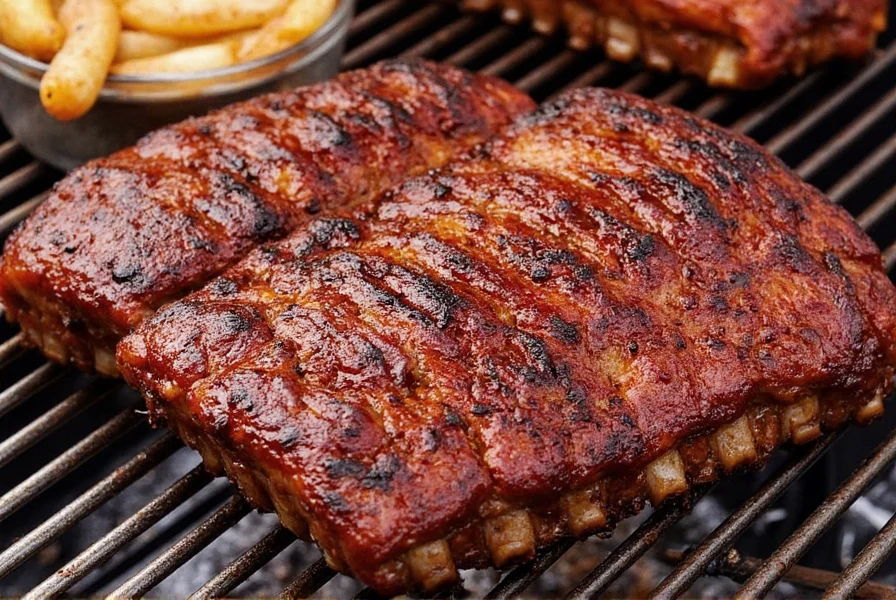

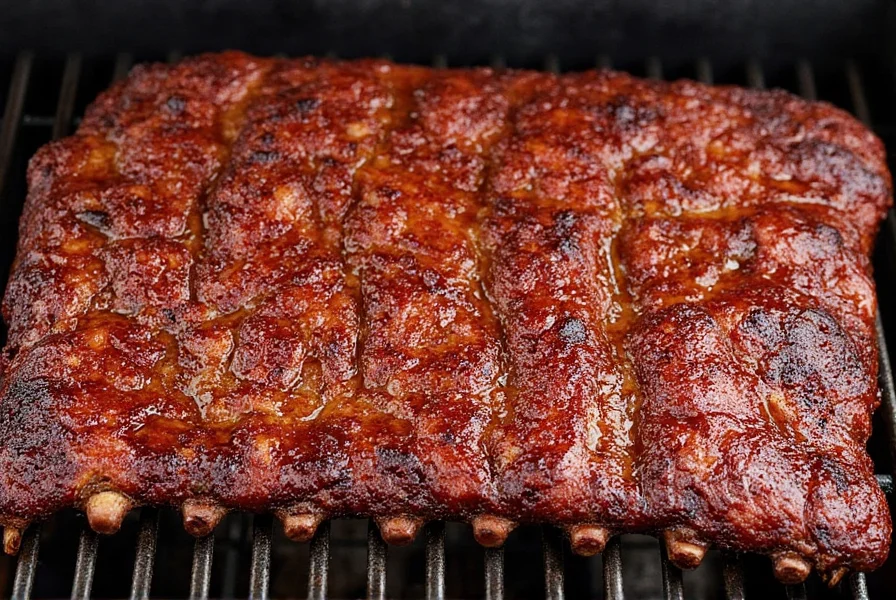









 浙公网安备
33010002000092号
浙公网安备
33010002000092号 浙B2-20120091-4
浙B2-20120091-4